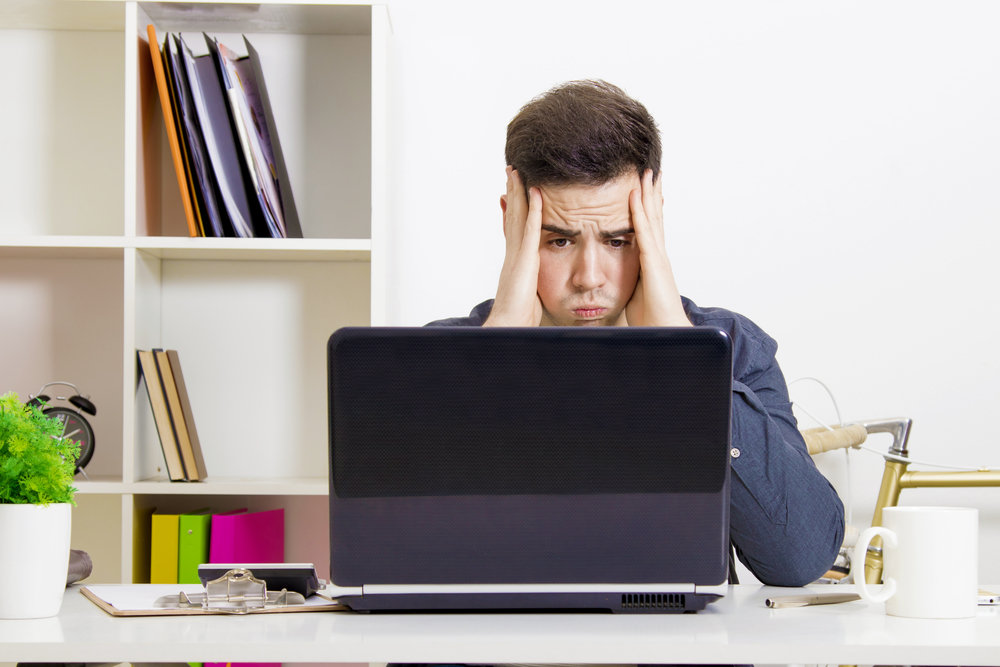In the early days of the web, slow loading websites were acceptable. But today, if a website takes more than a few seconds to load, most people will click back or close the browser tab. This increases the bounce rate on your site, as well as reducing shareability.
A lot of business owners are so busy with other tasks that they may not notice that their site is running a lot slower than they expect.
This slowdown has a lot of negative consequences. Especially if you run an e-commerce website, you may find your business losing sales. On top of this, Google ranks slower loading speed as a factor in your site SEO ranking.
It’s Not Just Your Internet Speed
Many people may presume that a slow internet connection causes a slow site. In reality, having a slow website is often to do with the website itself, rather than the internet service provider. Simply opening up a second website such as Google or Facebook will tell you immediately whether it’s your website or the internet connection that is slow.
How to Measure the Speed of Your Website
The easiest way to know the actual loading time of your site is to test your site via the PageSpeed Insights tool from Google. As a rule, if you can make Google happy, it’s going to help to achieve a better page ranking. The tool will give you specific suggestions on how to improve.
When it comes to reasons why your website is slow, there can be a range of factors that can cause it:
1) Your Web Host or Server
Every time someone visits your site, the browser they are using sends a request to another computer (known as a server) that carries the information back to their browser. This is how your website arrives on your visitors’ devices.
Less expensive web hosting will usually be using a shared server. When you’re sharing space and resources with countless other websites, it means you are at the mercy of how much of the bandwidth they are using. Often, if your site is slow, it’s because you’re in a queue with lots of other sites on the same shared server.
One solution here is to move to a Virtual Private Server, which although it is more expensive, will lower the number of other sites on the server and the slowdown.
2) Large Images
Images are a big part of most websites today. They help to engage and share your brand voice. When it comes to image resolution, it makes sense that higher amounts of dots-per-inch (dpi) would make it look better. However, there is a point at which the images on your site may start slowing the loading of the site, especially for new visitors.
For most purposes, web images should be less than 400 KB. A slider image at 1920×1080 pixels (at 72 dpi) should suit your needs. If you do need a larger resolution image, you can also compress them to strip unnecessary data.
3) Code, Theme & Plugins
The functional part of every website comes down to the code. When using WordPress, you can break this down into backend and frontend code:
Backend: PHP (Theme/Plugins/Wordpress Core,) MySQL (Database Queries)
Frontend: HTML, CSS, JavaScript
On top of this, you can have issues with the theme or plugins. If you’re operating on WordPress or another CMS platform (Magento, Laravel, Joomla, Drupal) the theme you chose may have complex coding which can add to your load times.
Outdated versions of PHP with a bloated site with lots of plugins can also cause slowdown. Something as simple as updating from PHP 5.6 to PHP 7.2 can result in three times as many requests per second.
4) Other Causes of a Slow Website
Other elements that can cause a website slowdown are:
Too many ads: Paid advertisements on your site or blog can make your speed drag. Only allow them if they’re worth the extra loading time.
Spam comments: Even if you don’t allow them on the site, they can be stored in the database. You can have hundreds or thousands of these in the archive that are causing slowdown.
Widgets: Widgets could be coded very densely which requires significant processing power. Use the latest versions whenever you can.
External Media (iframes): Embedding YouTube, Vimeo or Soundcloud can make your site much more user-friendly, but make sure there are not too many at one time, or they are not too large.
Remember to visit your own website regularly. Visit on your phone or a tablet, as well at different locations to see how your website loads. A few small improvements to the code, the images or choosing a good web hosting service for your website can make a significant difference to your website speed, and your visitors experience.
Brandastic is a digital marketing and advertising agency based in Orange County, California. We know it takes time and effort to create a compelling website and that details make all the difference. Let us know how we can help you take your website design to the next level, and grow your business.














